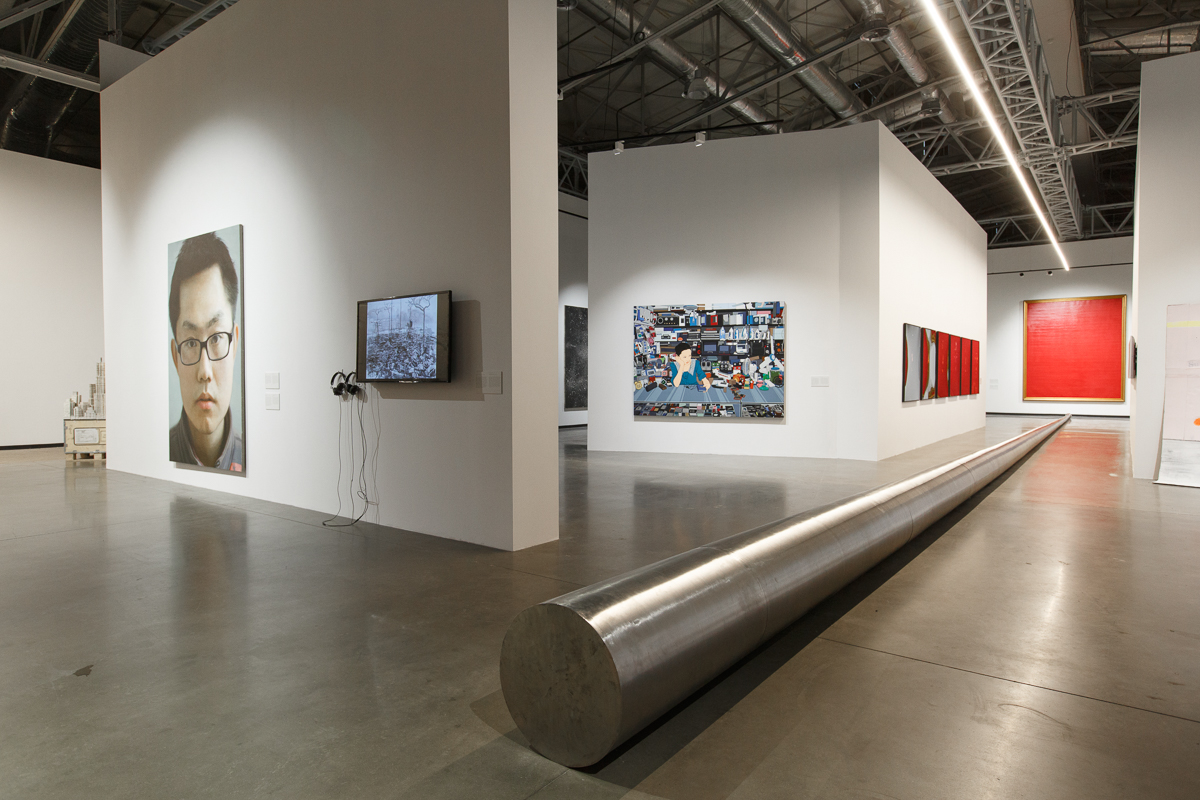An estranged paradise
Contemporary Chinese Art from the DSL Collection
Jewish Museum and Tolerance Center, Moscow — October 28, 2014-January 11, 2015

Dominique and Sylvain Levy are Parisian Collectors but they have become in the last few years among the most important collectors of contemporary Chinese art in the world. The DSL Collection was created in 2005 and it now represents most of the leading Chinese avant-garde artists, with a major influence on the art scene in China today. Even though it focuses on the contemporary production of a specific culture, the collection is animated by the search for otherness. However, it admits basic cultural similarities and dispositions, and goes beyond a simplistic approach looking for typical cultural signs and symbols. The collection is constantly on the move, redefining itself. Openness, movement and communication are the qualities the collectors want to promote.
The collection is not only significant on a personal level, but also on a larger scale. There is obviously a museum approach, which means that a wide range of media has been collected, including painting, sculpture, installation, video, and photography. Choosing this kind of approach implies making the collection accessible for the public, as well as documenting the featured works. The major tools to achieve these goals are new technologies, such as the Internet and interactive programs and supports, such as electronic books and magazines. These tools provide the means to sharing the experience of contemporary culture and to making it more accessible and meaningful for a broader public.
The first Chinese contemporary art collections were at the beginning collected by Westerners. Dominique and Sylvain Levy along with others such as the Swiss Uli Sigg or the Belgium Guy Ullens, were pioneers and they still are at the forefront of the knowledge of Chinese Contemporary. The desire to bring this passion and these findings to the public is as strong as ever, and this explains why a noteworthy selection of works from their collection in the context of JMTC in Moscow is highly significant. Contemporary art in China went out in the open 20 years ago thanks to the opening of the regime to the capitalist market system. The artistic avant-garde had the opportunity to manifest openly and to position itself towards more freedom, and to think and act with the present times. There are similarities and interesting parallels with the situation of art in the Russian Federation but also valuable cultural differences. That is why such an exhibition in such a context will be a major event symbolically speaking.
The title echoes Yang Fudong’s video work from 2002, which reflects the ideals and anxieties of the generation born during and after the Cultural Revolution, struggling to find its place in the rapidly changing society of the new China.

The exhibition reflects the basic principles of the DSL Collection – openness, dynamism and commitment to cultural dialogue. Globalization has accelerated processes that change the meaning of technology and media in contemporary art. Currently, communication links and art exchange overcome geographical boundaries. Despite the fact that the collection carries the idea of an authentic national tradition, it aims to establish a cross-cultural relations.
Ai Weiwei, Cao Fei, Chen Fei, Chen Shaoxiong, Chen Tong, Gao Weigang, Gu Dexin, Hu Wenlong, Huang Yong Ping, Jia Aili, Lee Kit, Liu Chuang, Liu Jianhua, Liu Wei, MadeIn, Peng Hongchi, Qiu Anxiong, Shen Yuan, Sun Yuan & Peng Yu, Yan Lei, Yang Fudong, Yang Jiechang, Xu Zhen, Zhang Huan, Zhang Peili, Zhao Xuebing